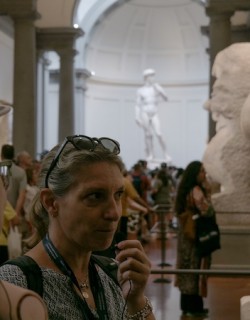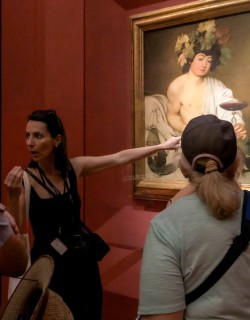In the heart of Florence, the city's soul comes to life in its enchanting piazzas. Life in the magnificent first city of the Renaissance is organised around its series of public squares, from grandiloquent landmark-studded plazas to humble neighbourhood piazzas where only the locals go. Each square weaves a unique narrative of history and culture, living canvases that are adorned with architectural masterpieces, artistic treasures and the echoes of centuries past.
But the piazzas of Florence are more than just museum pieces: they form the dramatic stage too for the city's vibrant tapestry of events, festivals, and street life, coursing with the spirited energy that animates this extraordinary Italian city.
From sensational Renaissance landmarks to extraordinary sculptures and fountains, from historic cafes and vibrant markets to bizarre historical re-enactments, find out what there is to see and do in five of the most beautiful squares in Florence you need to visit with our guide!
Piazza della Signoria
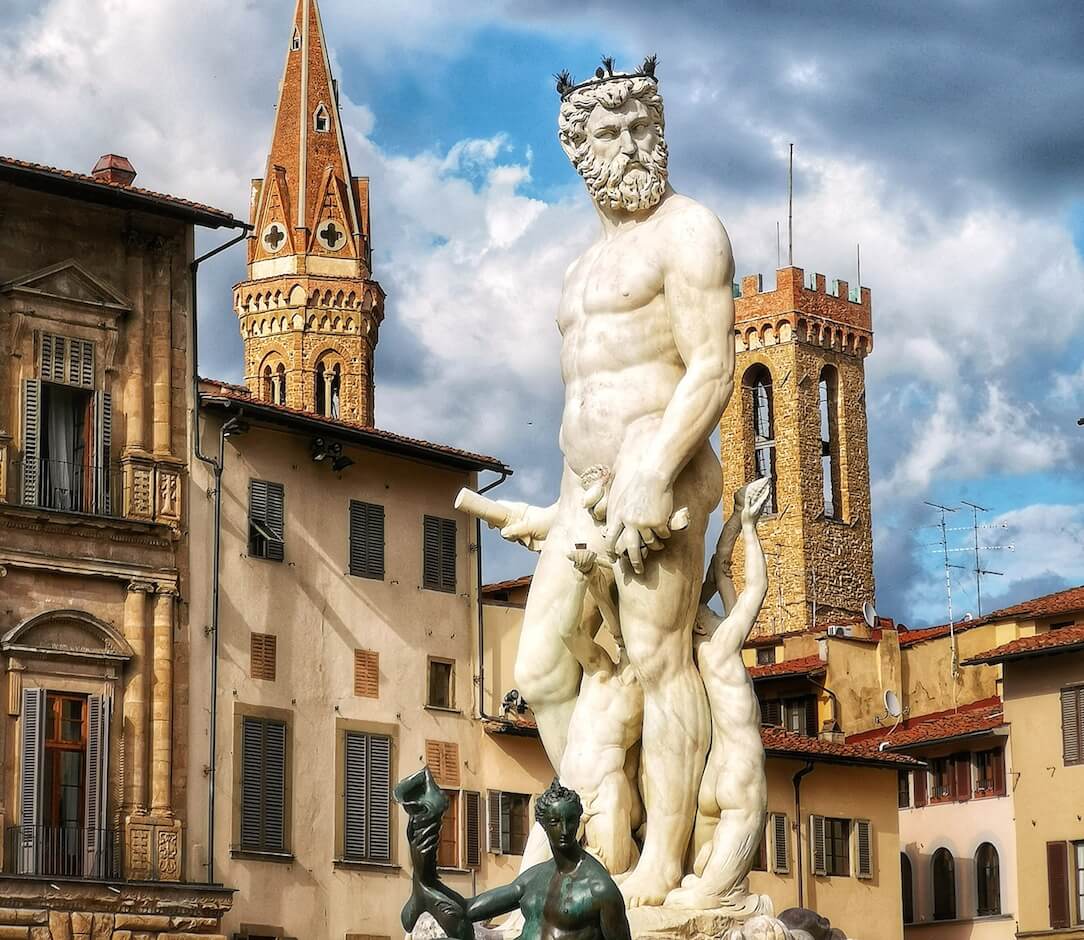
Located right in the heart of Florence’s historic centre, Piazza della Signoria has been the focal point of political and cultural life in the city for centuries. The imposing brick-clad Palazzo Vecchio, a crenellated medieval fortress and town hall, dominates the square's skyline and stands as a symbol of Florentine civic power. A fantastic collection of sculpture awaits those who venture in.
A replica of Michelangelo’s David stands guard over the building - the masterpiece was originally intended to grace the building’s facade as a symbol of Florentine power, before being moved to the Accademia Gallery across town for safekeeping.
The sweeping square is home to numerous fountains and sculptures, commissioned by powerful princes over the centuries to beautify the city’s most important public space. Look out for the Fountain of Neptune, designed by Bartolomeo Ammanati (and derided by Michelangelo) at the behest of the Medici dukes in the 16th century, as well as the massive equestrian monument to Cosimo I de' Medici sculpted by Giambologna.
The thrilling highlight of Piazza della Signoria, however, is the Loggia dei Lanzi, a 14th-century arcaded gallery that doubles as an open-air sculpture museum. Look out for Benvenuto Cellini's Perseus, a monumental bronze rendering of the Greek hero pictured in the aftermath of decapitating Medusa, whose lifeless body lies at his feet.
The Piazza has witnessed numerous historical events that have shaped the course of Florence. It was here, for example, that firebrand Dominican preacher exhorted wealthy Florentines to repent of their luxurious lives and burn their valuable possessions in the notorious Bonfire of the Vanities in 1497. Just a year later, municipal and papal authorities ran out of patience and had Savonarola burned at the stake at the centre of the piazza.
Piazza del Duomo
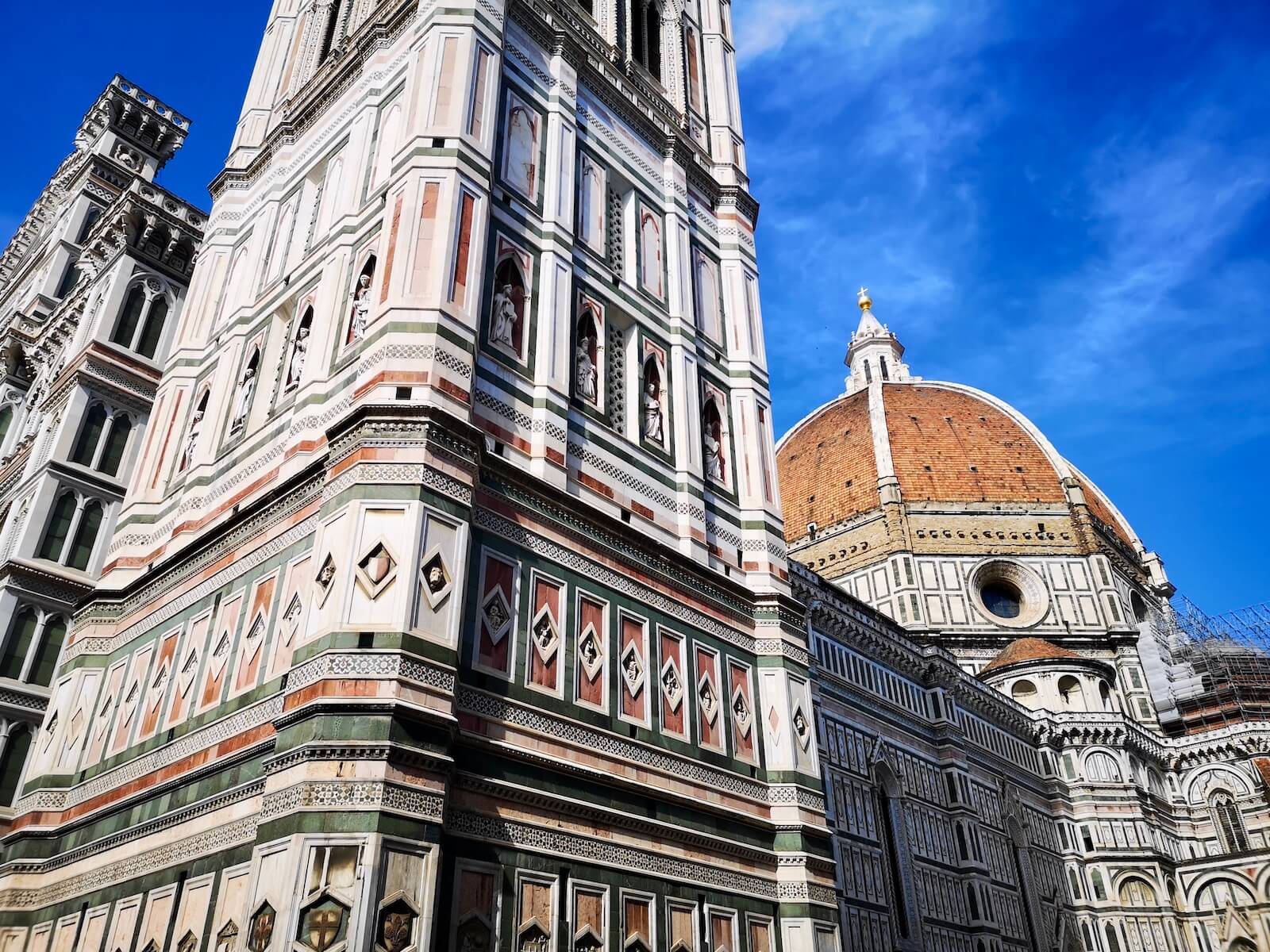
Piazza del Duomo in Florence can stake a strong claim to being the world’s most beautiful square. Nobody forgets the first time you glimpse Florence’s jaw-droppingly massive cathedral emerging like some great leviathan from the narrow tangle of the city’s medieval streets as the square opens up before you. With its series of carefully planned monuments, the mesmerising piazza offers up one of the most perfect examples of a unified Gothic architectural ensemble in existence.
Dominating everything is the Duomo itself - the second largest church in Italy after St. Peter’s Basilica in Rome, the church was begun in the 13th century when the comparatively diminutive Santa Reparata was no longer considered a fittingly grand focal point for the proud Republic. And so the Florentines began work on a cathedral that would rival and even surpass the grand houses of worship recently constructed by local rivals Siena and Orvieto.
The cathedral, initiated by Arnolfo di Cambio, took over a century to complete; but it was worth the wait - the stunning facade features row after row of pink, red and green marble and is topped by Filippo Brunelleschi's awe-inspiring red-tiled cupola - perhaps the crowning achievement of the Renaissance.
There’s more to Piazza del Duomo than the cathedral itself, however. The mighty bell tower, or campanile, that stands alongside is a masterpiece of the Tuscan Romanesque designed by the renowned proto-Renaissance painter Giotto in the 1330s. Completed after Giotto’s death in 1359, the campanile soars over 84 metres into the sky. If you’ve got the legs for the climb, you’ll be rewarded with an extraordinary view of Florence.
The octagonal baptistery, meanwhile, dedicated to the city’s patron saint John the Baptist, is one of the oldest buildings in Florence. The Baptistery is best known for its extraordinary series of bronze doors - including Ghiberti’s Gates of Paradise - but make sure to venture inside and you’ll be blown away by the glittering mosaics that cover the ceiling.
Piazza di Santo Spirito
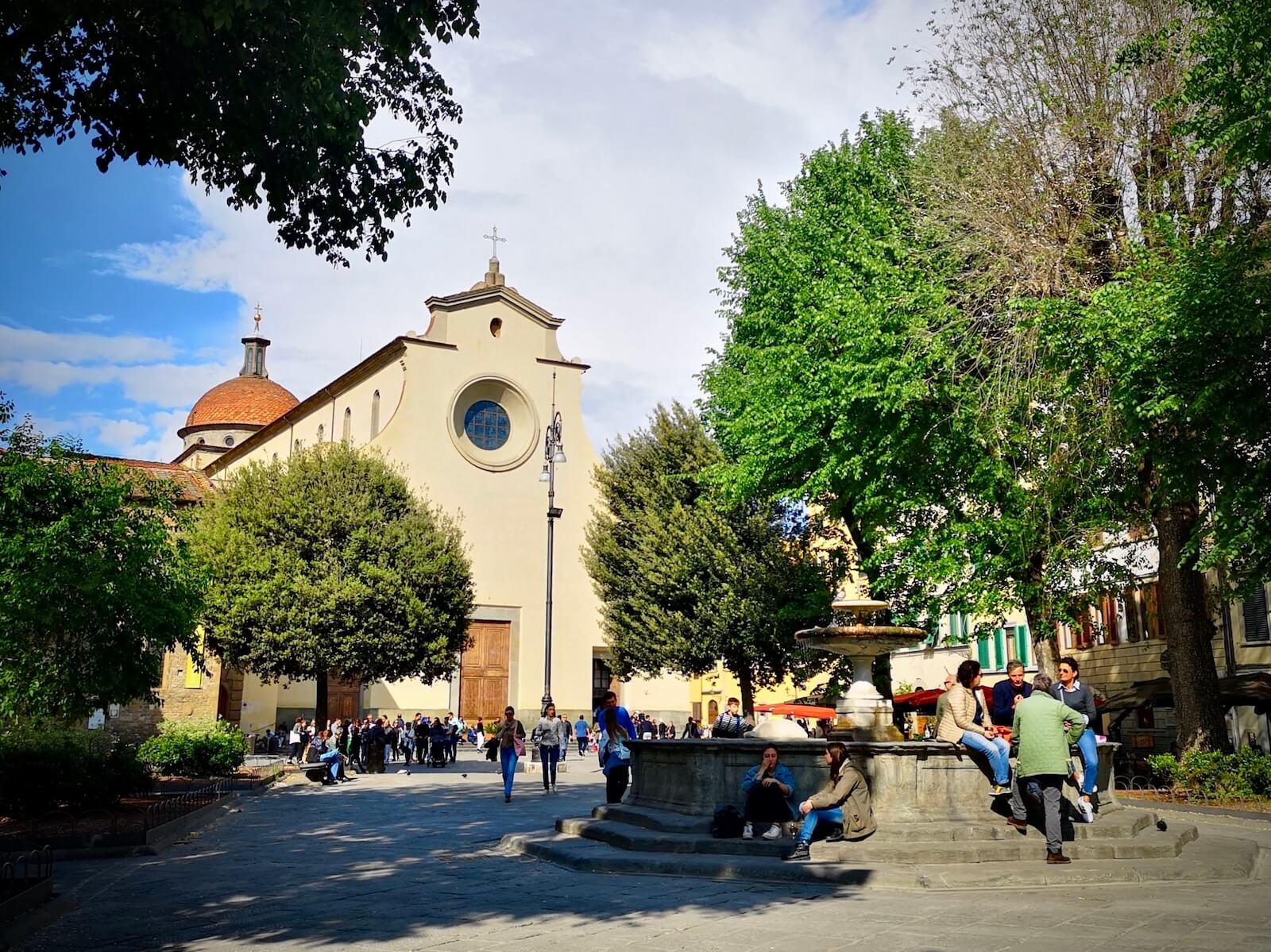
Located in the vibrant Oltrarno neighbourhood on the southern side of the Arno river, Piazza di Santo Spirito is the meeting-place par excellence for Florentines at all times of the day and night. With their tables spilling onto the sidewalk, a multitude of cafes and bars that ring the long piazza are perfectly suited for everything from a morning cappuccino to evening aperitivo and late night digestivo, and offer up a slice of authentic Florenine life away from the tourist crowds.
During the day, the piazza plays host to a picturesque market where stallholders sell craft objects, antiques and vintage clothes in the shade of the trees.
The square is overlooked by the Brunelleschi-designed Basilica di Santo Spirito, a marvel of Renaissance architecture that hosts an array of important artworks - including a crucifix sculpted by Michelangelo as a thanksgiving to the church’s monks for allowing him to perform autopsies in the adjacent hospital morgue.
Piazza di Santa Croce
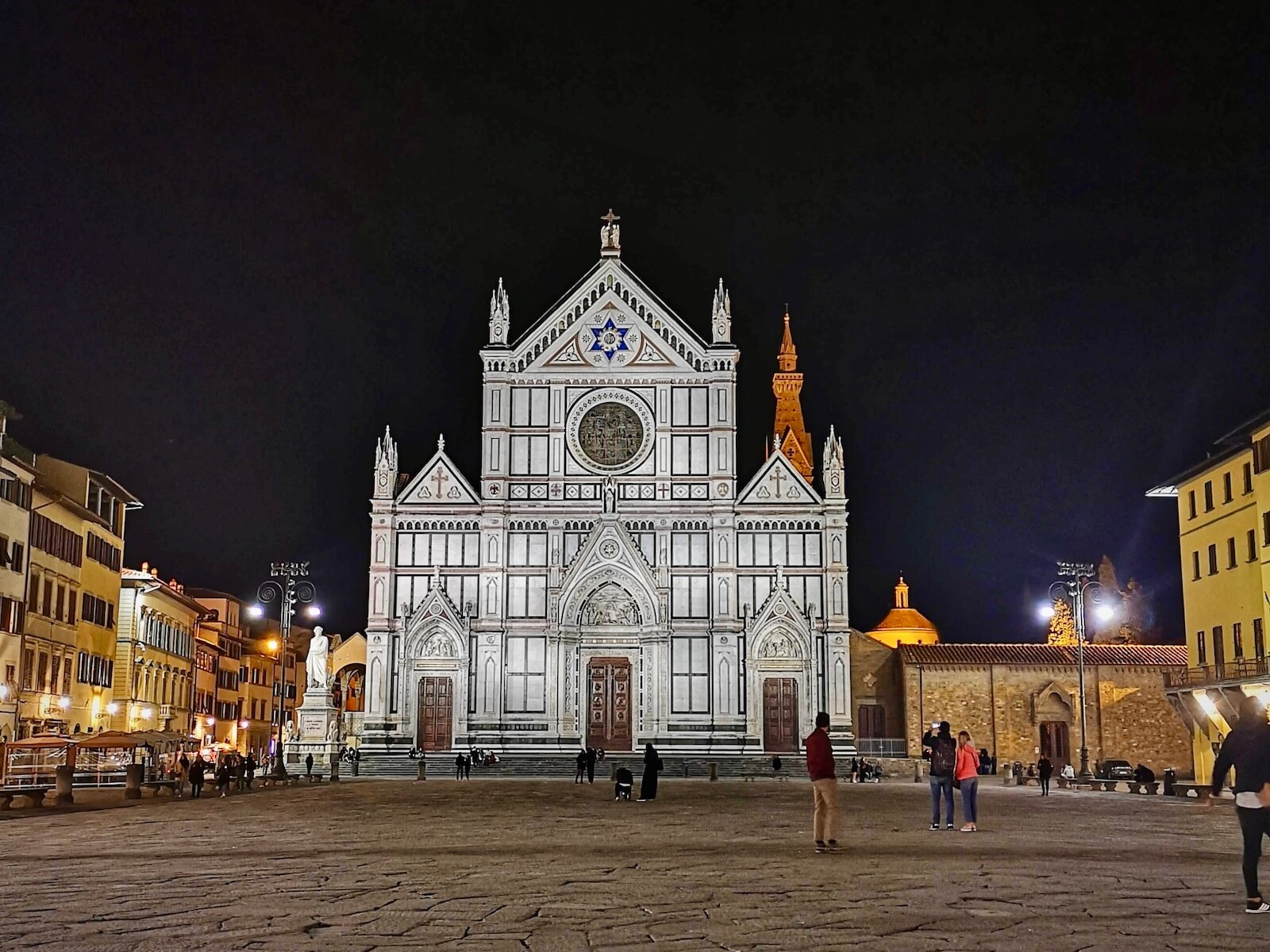
Piazza di Santa Croce, situated in the eastern part of Florence’s historic centre, is another must-visit square in the city of the Medici. The centrepiece is the truly massive Basilica di Santa Croce, a Franciscan church known for its sublime Gothic architecture. Designed for the order by Arnolfo di Cambio beginning in 1294, the basilica is named for a splinter of the Holy Cross donated by King Louis IX of France in 1258.
The church is the traditional burial place of the great and good in the city - including Michelangelo, Machiavelli and Galileo. Extraordinary artistic masterpieces, meanwhile, are everywhere you look, from Giotto's paintings in the Bardi and Peruzzi Chapels to Agnolo Gaddi's marvellous frescoes depicting The Legend of the True Cross behind the altar.
Thanks to its large size and regular shape, the piazza in front of the church has been an important site for cultural and civic events over the centuries. Numerous religious processions pass by here, whilst historical re-enactments and periodical markets add to the atmosphere.
Most interesting of all are the games of calcio storico that take place in the piazza: this thrilling and ultra-violent ball game is somewhere between football, rugby and MMA, and dates back many centuries. If you are in Florence in the summertime, particularly on the feast day of the city’s patron saint St. John the Baptist on June 24th, be sure to head over to the Piazza to catch a game!
Piazza della Repubblica
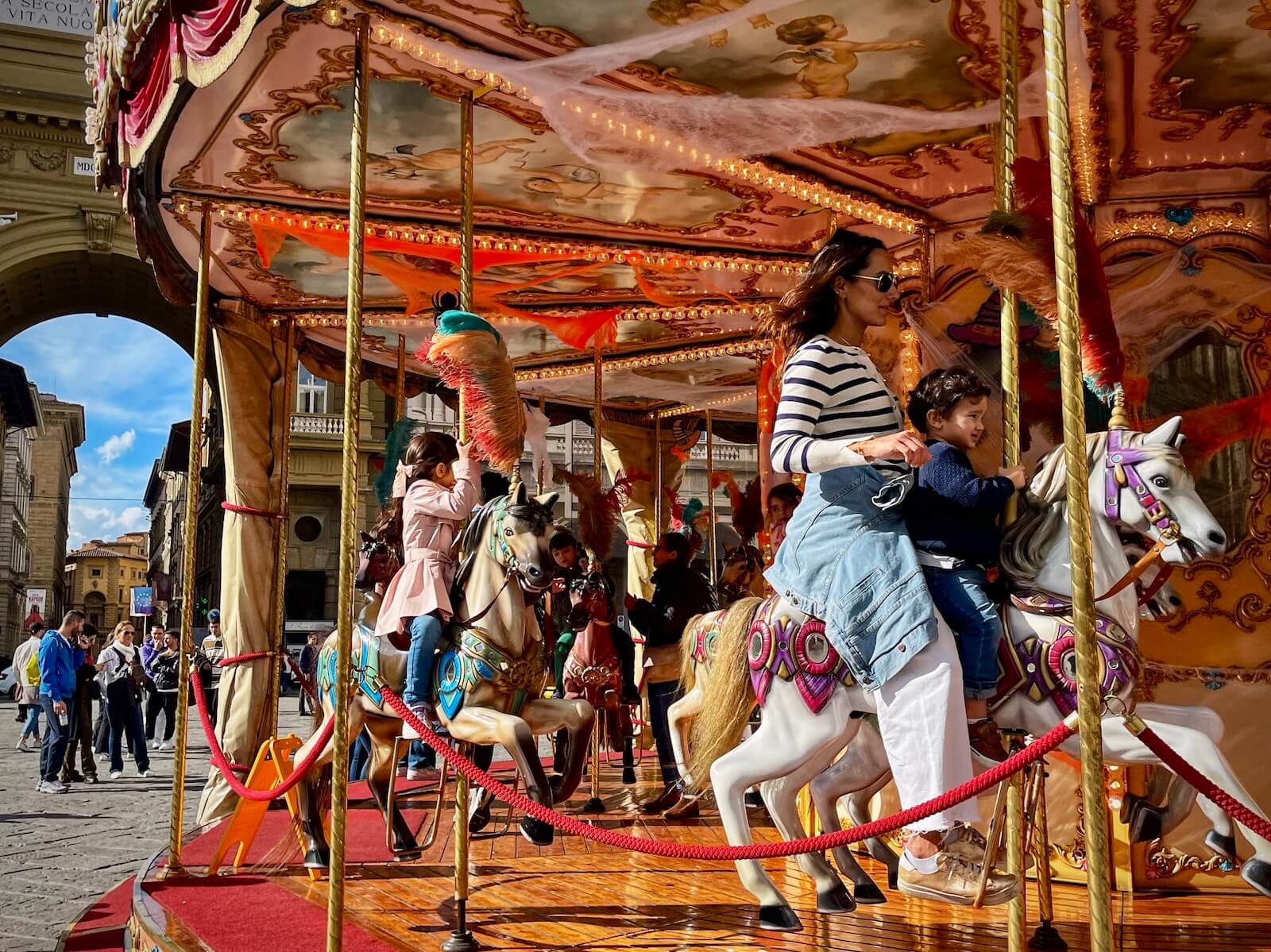
Unlike the other piazzas on our list, which speak to Florence’s pre-eminent status during the medieval and Renaissance periods, Piazza della Repubblica instead stands as testament to the city’s flourishing in the mid-19th century when it was designated as the first capital of a unified Italian state in 1865. The square, however, has very ancient origins: although no traces remain, this was the original site of the Roman city’s Forum.
Piazza della Repubblica underwent significant changes during the city's 19th-century urban renewal plan, resulting in its present layout. The piazza features elegant neoclassical buildings, including the triumphal arch known as the "Arcone" or "Arch of Triumph," built in 1895 to celebrate the city's capital status.
The arch is adorned with sculptures and reliefs depicting important events in Florence's history. At the centre of the square is a beautiful historic carousel dating from the beginning of the 20th-century, featuring 20 wooden horses and two opulent carriages that whirl round and round, seeming to transport you back in time.
Piazza della Repubblica is also renowned for its historic cafes. Notable among these is Caffè Gilli, established in 1733, which has long been a gathering place for intellectuals, writers, and artists, and is known for its delectable sweet treats as well as serving up one of the best negronis in town.
We hope you enjoyed our guide to five of the most beautiful piazzas in Florence! If you’d like to visit the stunning squares described above in the context of an expert local guide, then be sure to check out our group tours of Florence and private Florence itineraries, where we give you the inside track on life in the city of the Medici.


